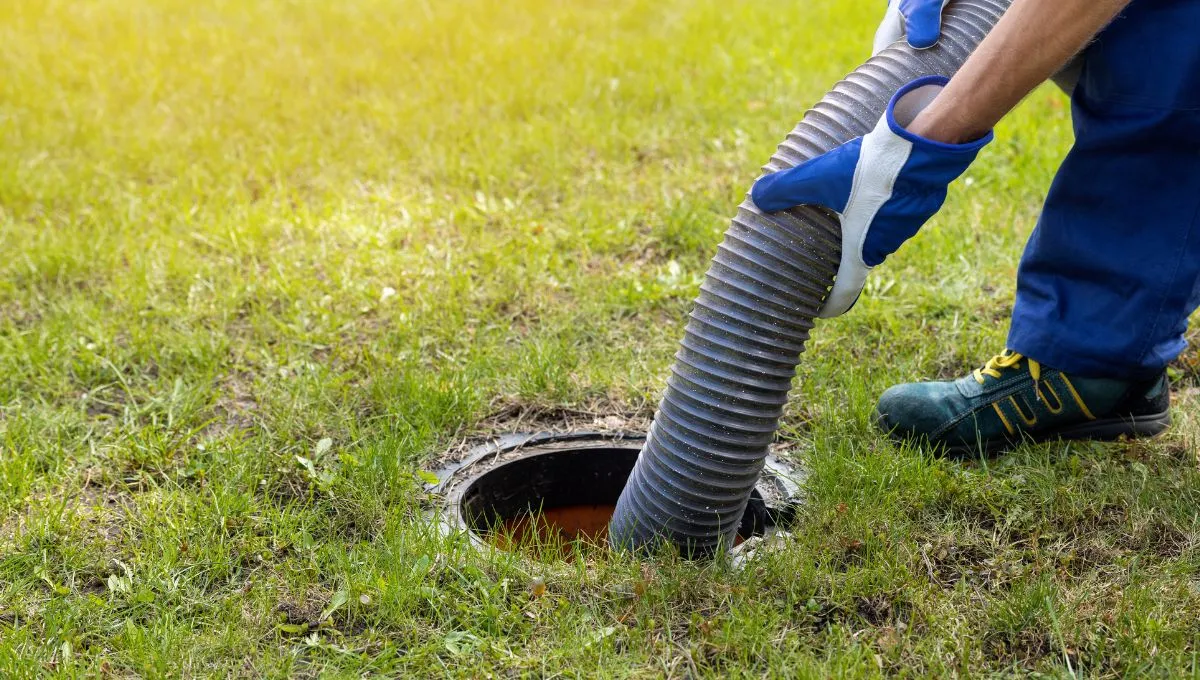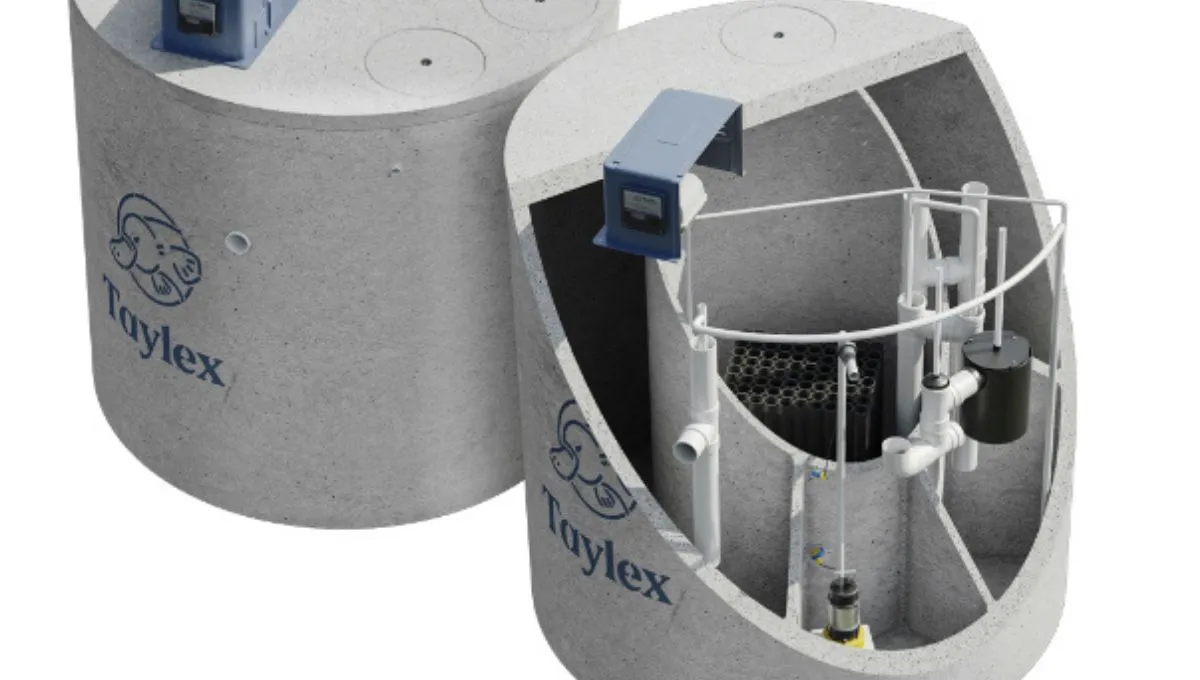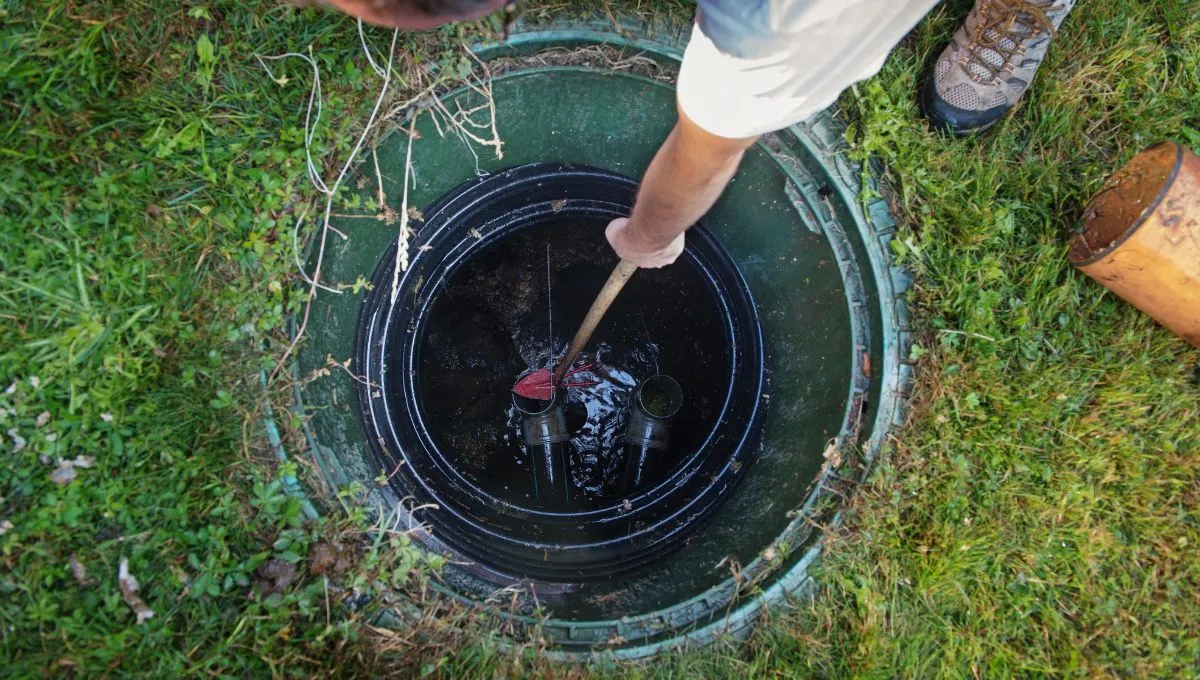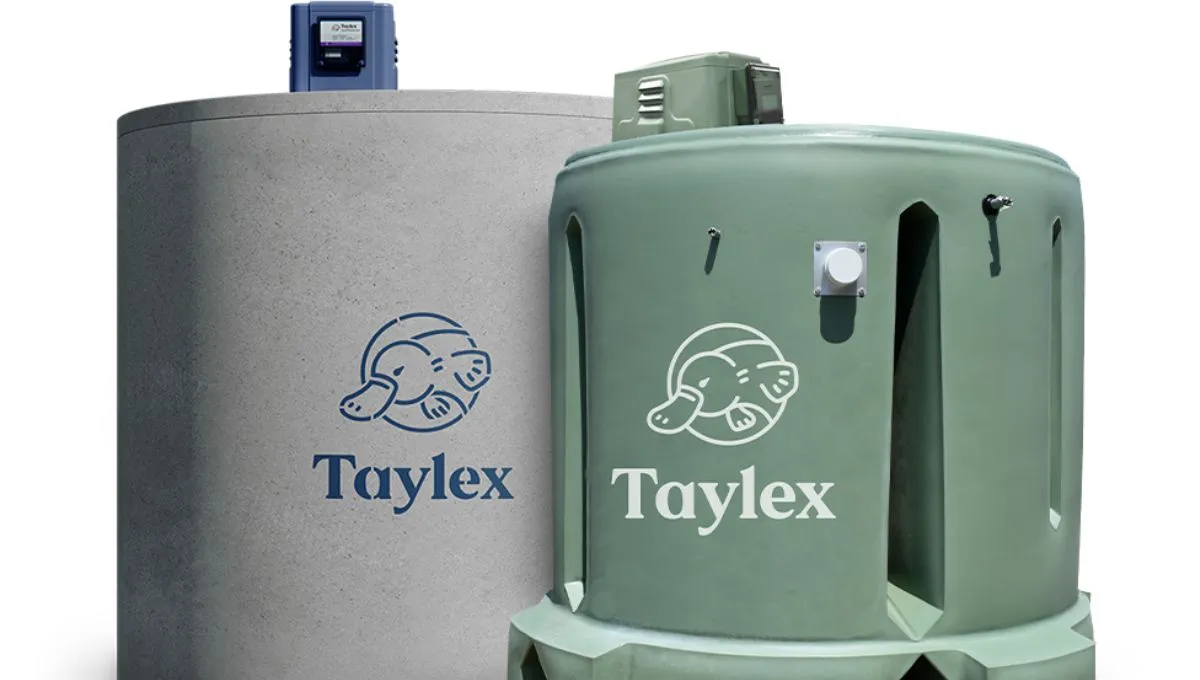
Have you ever wondered how a septic tank works? Surprisingly, one in four Australian homes relies on a septic system for wastewater management. Yet, most homeowners are unaware of how this essential system operates. Understanding how it works is crucial if you’re one of them or considering a house with a septic system. Do you know how it quietly and efficiently handles all the waste from daily activities? Let’s understand septic tanks better and explore each stage of their operation, from receiving wastewater to the final discharge of treated water back into the environment.
What is a Septic Tank?
A septic tank is a sizable underground container typically made of concrete, fibreglass, or plastic. Its primary function is to collect and treat household wastewater. It’s a common solution for homes not connected to a municipal sewer system in rural and suburban areas.
Want to learn more? Check out our detailed post on “What is a septic tank?“
What Is a Septic Tank Used for?
A septic tank is your home’s wastewater treatment system. Its main function is to collect household wastewater and separate the solids from the liquids. This separation allows the liquid portion to undergo a natural treatment process within the tank, eventually filtering safely into the soil through a drainage system.
Types of Septic Tank Systems
Several types of septic systems are available, each designed to meet different needs and environmental conditions. The most common include conventional systems, which are popular due to their simplicity and cost-effectiveness.
Aerobic systems, which use oxygen to break down waste more efficiently, are ideal for poor soil conditions. Additionally, sand filter systems offer an advanced level of treatment. Each type of system has specific installation and maintenance requirements and varies in its treatment capacities and complexity.
Components of a Septic Tank System
A septic tank system consists of the following key components, each contributing to the system’s overall function:
1. Pipe from the House
Wastewater from sinks, toilets, showers, washing machines, and other appliances flows through underground pipes into the septic tank.
2. Septic Tank
The tank itself is where the magic happens. It receives, separates, stores, and treats the wastewater.
3. Drain Field
This network of underground pipes and gravel (leach or absorption field) filters and disperses the treated wastewater (effluent) from the septic tank back into the soil.
4. Soil
The soil acts as a final filter for wastewater treatment. The effluent percolates through the soil, undergoing filtration and purification. Eventually, it returns to the groundwater or nearby water bodies.
How Septic System Work?

Understanding how a septic tank functions can help homeowners manage and maintain their systems effectively. This section provides an in-depth look at the basic steps of operating a septic system, ensuring efficient wastewater treatment and environmental protection.
Step 1: Wastewater Enters the Tank
Wastewater from your home’s toilets, sinks, showers, and washing machines enters the septic tank through underground pipes. The initial wastewater flow into the septic tank marks the beginning of the treatment process.
Step 2: Separation and Decomposition of Solids and Liquids
As wastewater enters the septic tank, it begins to separate into three distinct layers due to differences in density and composition.
- Scum Layer (Top): This layer includes oils, grease, and fats that float above the effluent. These lighter substances accumulate on the surface, forming a scum layer.
- Effluent Layer (Middle): The relatively clear liquid layer, known as effluent, remains between the scum and sludge layers. This effluent receives further treatment before being released into the drain field.
- Sludge Layer (Bottom): Heavier solids settle at the bottom of the tank. Over time, these solids accumulate and need to be periodically removed through pumping.
This separation process is crucial as it ensures that only the relatively clean effluent moves on to the next stage of treatment.
Step 3: Breakdown of Organic Material
Both anaerobic and aerobic bacteria play vital roles in breaking down the organic matter within the effluent.
- Anaerobic Bacteria: These bacteria thrive in the oxygen-free environment of the septic tank, decomposing organic material into simpler compounds.
- Aerobic Bacteria: While less common in the septic tank, aerobic bacteria may be present in the drain field, contributing to further breakdown of organic matter.
These biological processes are essential for reducing the volume of solid waste and transforming complex substances into simpler, less harmful compounds.
Step 4: Effluent Goes to Drain Field
After partial treatment in the septic tank, the effluent flows into a drain, leach, or absorption field. This field comprises a network of perforated pipes buried in gravel-filled trenches.
- Perforated Pipes: Allow the effluent to be evenly distributed throughout the drain field.
- Gravel and Porous Materials: Facilitate the absorption and gradual release of the effluent into the surrounding soil.
This setup ensures the effluent is spread over a large area, promoting effective absorption and preventing surface pooling.
Step 5: Effluent Filters Through the Soil
As the effluent penetrates the soil in the drain field, it undergoes further filtration and purification. The soil acts as a natural filter, removing contaminants and pathogens.
- Soil Organisms and Microorganisms: These beneficial organisms are critical in breaking down any remaining organic matter and neutralising harmful bacteria and viruses.
- Physical Filtration: The soil structure traps and filters out solid particles, ensuring that only treated water reaches the groundwater.
Step 6: Safe Discharge to the Environment
After natural filtration and purification processes, the treated water safely re-enters the groundwater or nearby water bodies, completing the wastewater treatment cycle.
Why Septic Tanks are Essential for Homeowners
Septic tanks are important for keeping your family healthy and protecting the environment. Collecting wastewater in a specific tank serves several essential purposes, including:
1. Wastewater Treatment
Septic tanks naturally treat wastewater, separating solids and liquids for bacterial breakdown and purification before discharge.
2. Prevention of Pollution & Environmental Protection
Septic tanks prevent pollution by collecting and treating wastewater and protecting water sources from untreated sewage.
3. Compliance with Regulations
Installing and maintaining a septic tank ensures compliance with wastewater treatment regulations, protects health and the environment, and avoids legal issues.
4. Public Health
Proper wastewater treatment in septic tanks protects against the spread of disease.
5. Cost-Effective
Septic tanks are often a more affordable option than connecting to a municipal sewer system, especially in remote areas.
Maintaining Your Septic Tank

Maintaining your septic tank is a fundamental aspect of responsible homeownership. By keeping your system in optimal condition, you can avoid costly repairs, protect the environment, and ensure the longevity of your investment. Regular maintenance involves a few key steps that are easy to implement. Remember, a well-maintained septic system is crucial for the health of your household and the surrounding ecosystem.
Importance of Maintenance
Regular maintenance is vital for the efficient operation of your septic system. Here are some of the benefits of septic tank maintenance:
- Prevents system failure, including clogged pipes, backups, and tank damage
- Ensures proper functioning and prevents pollution
- Extends lifespan, saving money on replacements
- Protects property value and increases resale value
Maintenance Schedule
Pumping Frequency
Most septic tanks require pumping every 3-5 years, varying depending on household size and water usage. Consult a professional to determine the ideal pumping schedule for your specific system.
Inspection Recommendations
In addition to pumping, it’s wise to have your septic system inspected annually by a qualified professional. This examination can help identify potential issues early on before they escalate into major problems.
Do’s and Don’ts
- DO conserve water to avoid overloading the system.
- DO use septic-safe cleaning products and toilet paper.
- DON’T flush non-biodegradable items like wipes, feminine hygiene products, or grease.
- DON’T plant trees or shrubs near the drain field.
Learn to maintain you septic tank properly in our comprehensive blog, “How to maintain septic tanks?“
Common Problems and Solutions in Septic Tanks: Troubleshooting Guide
Common Problems
- Slow drains
- Foul odours
- Gurgling sounds in the plumbing
- Soggy areas around the drain field
Solutions and DIY Tips
- Check for blockages in pipes.
- Use a septic-safe additive to promote bacterial activity.
- Pump the tank if it’s nearing capacity.
- Call a professional for complex issues or repairs.
When to Call a Professional
- If DIY solutions don’t work
- For suspected leaks or system malfunctions
- For regular inspections and maintenance
Tips to Prevent Septic Tank Problems
Prevention is key to maintaining a healthy septic system. Here are some tips to prevent common problems:
- Schedule regular inspections and pumping.
- Conserve water and spread out water usage.
- Dispose of waste properly and avoid non-biodegradable items.
- Protect the drain field from compaction, traffic, and roots.
- Use septic-safe products and avoid harsh chemicals.
- Address drainage problems and odours promptly.
Factors Affecting Septic Tank Performance
Several factors can influence how well your septic tank operates:
- Household Size and Water Usage: Larger households and high water consumption can strain the system.
- Type and Design of Septic Tank: Your tank’s size, material, and design impact its treatment capacity.
- Soil Composition and Drainage: The soil’s ability to filter effluent affects the drain field’s effectiveness.
- Maintenance and Pumping: Regular maintenance is key to optimal performance.
- Proper Waste Disposal: Avoid flushing harmful substances that can disrupt the bacterial balance in the tank.
What are the Pros and Cons Of a Septic Tank?

Septic tanks are a viable alternative to municipal sewer systems, offering unique benefits and challenges for homeowners. Let’s get into it right away:
Pros:
- Cost-effective compared to sewer systems
- Eco-friendly when properly maintained
- Provides independence from municipal sewer systems
Cons:
- Requires regular maintenance
- Potential for system failure without proper care
- Not suitable for all areas
Septic Tank Alternatives and Advanced Systems
In situations where traditional septic systems aren’t feasible, alternative solutions exist. Here are some examples:
1. Aerobic Treatment Units (ATUs)
ATUs use oxygen to accelerate the breakdown of organic waste. Their aeration mechanisms stimulate the growth of aerobic bacteria. This mechanism treats and cleans effluent, making ATUs suitable for areas with limited space or poor soil conditions.
2. Constructed Wetlands
Constructed wetlands treat wastewater by imitating natural purification processes using vegetation-filled ponds or channels. They effectively filter and remove contaminants while promoting sustainability and providing wildlife habitat.
3. Sand and Media Filters
Sand and media filters provide an alternative to septic tanks by purifying wastewater through layers of filtering materials. They are ideal for areas with shallow groundwater or unsuitable soil conditions.
Taylex for your Home’s Septic Tank
Taylex is Australia’s leading wastewater treatment solutions provider with over 50 years of experience. We offer:
- Expertise: A team of highly trained specialists dedicated to designing and installing the right system for your needs.
- Quality: Durable and reliable septic tanks and components built to last.
- Customer Service: Exceptional support throughout the process, from consultation to maintenance.
- Environmental Responsibility: A commitment to sustainable solutions that protect our planet.
Final Insights: Efficient Septic Tank Management
Understanding how your septic tank works is key to keeping it in optimal condition and protecting your home and the environment. Following proper maintenance practices and being mindful of what goes down your drains, you can ensure your septic system provides years of trouble-free service. If you have any questions or concerns, please contact Taylex—we’re here to help!
Contact Taylex today for a free consultation and discover how we can tailor a wastewater solution that meets your needs and exceeds your expectations!!
How Does a Septic Tank Work: FAQs
What are the 5 functions of the septic tank?
The functions of a septic tank are as follows:
- Separation of solids and liquids
- Biological treatment
- Storage of treated effluent
- Prevention of contamination
- Retention of solids
How often should you pump out your septic tank?
Regularly pump out your septic tank every 3 to 5 years to remove solids, prevent clogs, and avoid system failures. Adjust the frequency based on household size, water usage, and tank size.
How much does a septic tank cost?
The cost of a septic system can vary widely depending on factors like the tank size, type of system, site conditions, and local regulations. On average, expect to pay anywhere from $5,000 to $20,000 or more for installation.
What are the signs a septic tank is full?
Signs that your septic tank is full include:
- Slow drainage in sinks, toilets, or showers.
- Foul odours coming from drains or around the septic tank area.
- Standing water or soggy areas near the drain field.
- Sewage backup into the house.
What happens if you never drain your septic tank?
Solids will build up, causing clogs in the pipes, backups in drains, and system failure. Untreated sewage may overflow into your yard or back up into your home, posing health risks and environmental contamination.
What destroys a septic tank?
Several factors that can damage your septic tank include:
- Flushing non-biodegradable items
- Using harsh chemicals or antibacterial agents
- Overloading the system
- Lacking regular maintenance
What happens when a septic tank is full?
Untreated sewage can overflow into the drain field, causing soggy areas, foul odours, and potential health risks.
How do I choose the right septic system for my home?
Consider your household size, daily water usage, and the soil conditions on your property. Always check local regulations before installation.
Want to know more? Dive into our detailed post on “Septic Tank Installation” now.
What are the signs my septic system is failing?
Slow drains, sewage odours, backups in sinks or toilets, and unusually lush vegetation over the drain field are common warning signs to indicate that your septic system is failing.
How often should I have my septic system inspected?
Have your septic system inspected by a professional annually to ensure it is functioning properly and catch any issues early.